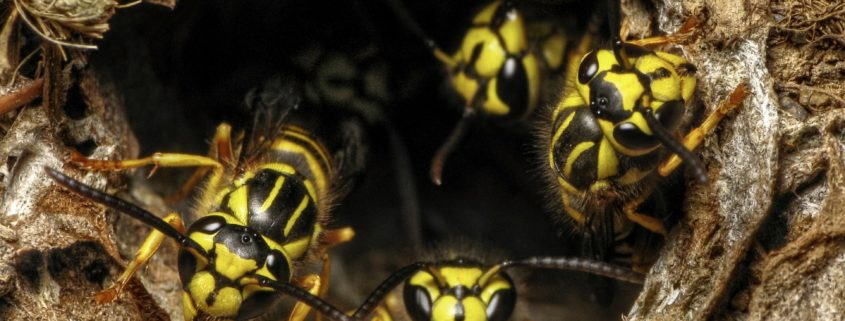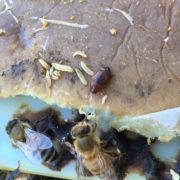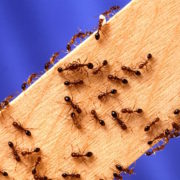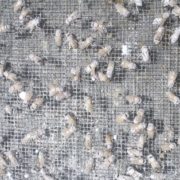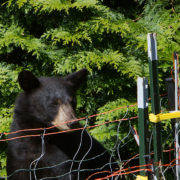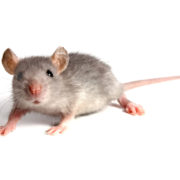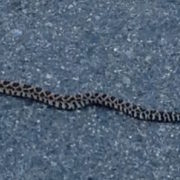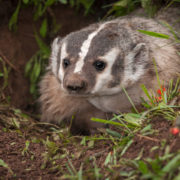Yellowjackets And Honeybees
Although non-beekeepers sometimes confuse yellowjackets with honeybees, a beekeeper knows the difference between the two very well. The honeybee is loved by the beekeeper, and the yellowjacket? Well, maybe not so much . . .
Yellowjackets are predatory wasps that feed on many of the same nectar sources as honeybees. However, yellowjackets are carnivorous as well, and feed on other insects – yes, including honeybees! Yellowjackets also eat other sources of sugar, such as fruits and tree sap.
Unlike honeybees, yellowjackets do not overwinter as a hive. Only the queen yellowjacket overwinters. Therefore, a yellowjacket colony starts from nearly zero in the spring, to its full size of nearly 5,000, which appears in late summer.
At Wildflower Meadows, in late summer we begin to see the presence of yellow jackets, especially around our mating nucs, which because of their small size, are most vulnerable to yellowjacket attacks. Yellowjackets seek out the small mating nucs to both kill and eat bees, as well as to rob honey and sugar syrup.

